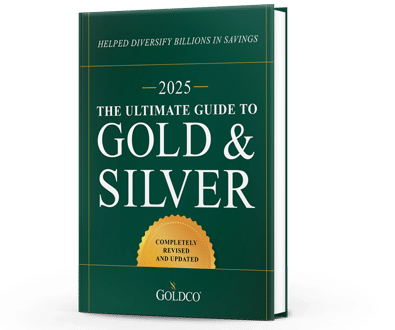
For decades most people assumed that they would find a job after college, work hard for 30-40 years, and retire comfortably with a pension. But that assumption has long since gone by the wayside. Pensions are largely a thing of the past in the private sector, job stability is not what it used to be, and retirement saving is now almost solely the responsibility of employees themselves.
Not only do people today hop from job to job more often than in the past, many more are even joining the ranks of the self-employed. While there are many advantages to being your own boss, there are numerous drawbacks too.
First and foremost among them is that by being self-employed, you don’t have access to retirement plans that employees at many companies do. A workplace 401(k), employer matching, and all those other benefits are something that you don’t have when you work for yourself. But if you thought you wouldn’t be able to take advantage of tax-advantaged retirement savings options as a self-employed person, you’d be wrong.
Those who are self-employed are eligible to set up what’s known as a solo or individual 401(k). It’s essentially a 401(k) plan just for you, and investing in it allows you many of the same benefits as those who invest through a workplace 401(k) plan. If you’re self-employed and wondering how to start saving for retirement, you might look into setting up a solo 401(k) plan for yourself.
What Is a Solo 401(k)?
A solo 401(k), or individual 401(k), is a 401(k) plan that is set up for an individual self-employed person. It’s also known as a one-participant 401(k). In order to qualify to set up a solo 401(k) plan, you must be self-employed, and you must be the sole employee of your business. Once you start hiring employees, you’ll have to offer them access to your 401(k) plan if they’re eligible.
Contribution limits for individual 401(k) plans are similar to those for employer-sponsored 401(k) plans. Your employee contributions are limited to $19,000 in 2019, or $25,000 if you’re over the age of 50. Your business may also contribute up to 25% of your compensation, up to a total combined employer/employee contribution of $56,000 (or $62,000 for those over age 50.) Contribution limits generally increase each year, and the new limits for the following tax year are normally published in early November.
As with any financial investment, though, you’ll want to consult a financial adviser and a tax adviser to make sure that your contributions are consistent with IRS guidelines and that you’re doing everything by the book.
Benefits of Setting Up a Solo 401(k)
While not having a traditional employer-sponsored 401(k) plan can have some drawbacks, there are some benefits as well.
Benefits
- Add a Spouse – The IRS does allow one exception to the no-employee rule, namely an exception for spouses. If your spouse earns income from your business, he or she could participate in your individual 401(k) plan and make his or her own contributions. That can essentially double the amount of money that you’re able to contribute to your 401(k) plan, subject to income limits.
- Better Choice of Investments – With an employer-sponsored 401(k) plan you’re often limited to the investments within your employer’s plan. If you’re lucky, you’ll have several dozen funds from which to choose. If you’re not, you may have only a handful. With a solo 401(k), you can choose which brokerage you want to work with, allowing you to tailor your 401(k) plan so that you can choose the broker who offers you the most and best investment choices.
- Choose Your Plan – Most employer-sponsored plans are traditional 401(k) plans, meaning that contributions are deducted before taxes, gains accrue without taxation, and taxes are paid at distribution. With an individual 401(k) you can choose to start a Roth 401(k) plan, which uses post-tax dollars but in which gains accrue tax-free and distributions are also tax-free.
Drawbacks
- Increased Paperwork – If your individual 401(k) plan accrues over $250,000 of assets, you’ll have to file additional paperwork with the IRS. The extra paperwork is likely more of a nuisance than a hindrance, but you’ll have to stay on top of it.
- Not Great for Side Gigs – If your self-employment income comes from a side gig and you also participate in an employer-sponsored 401(k) program, you’ll be limited in how much money you can contribute to an individual 401(k). Here again you’ll want to consult with a financial adviser and tax adviser to see how much you’ll be allowed to contribute and whether it’s worth it to set up a solo 401(k).
How to Start a Solo 401(k)
Starting a solo 401(k) can be done relatively easily. Here are the steps you’ll need to take.
- Determine Your Eligibility – Here’s where you’ll want to talk to your financial adviser and tax adviser to determine whether a solo 401(k) plan is the right choice for you.
- Find a Provider – Numerous companies offer individual 401(k) plans, including many of the big financial brokerages such as Charles Schwab, Vanguard, and Fidelity.
- Do the Paperwork – You’ll need to fill out and sign several forms to set up your individual 401(k) plan, including details of the plan, disclosure forms, etc. If you ever hire employees, all your paperwork needs to be in order because your solo 401(k) will have to be converted to a traditional 401(k).
- Open Your Solo 401(k) Account – Once your paperwork is in order, you can set up your solo 401(k) account with your chosen provider.
- Make Contributions – Once your account is active, you can start making contributions to it. Since you’re in control of your contributions, you can determine how often and in what method you’ll make your contributions.
Once you have a solo 401(k) set up and running, you can do a whole lot of things with your funds. If you have existing 401(k) funds in an employer-sponsored plan, you can roll over your existing 401(k) into your new individual 401(k). And you can also roll over the funds in your 401(k) into alternative investments such as a gold IRA.
Determining If an Individual 401(k) Is Right for You
You’ll want to consult with a tax adviser and financial adviser to determine if an individual 401(k) is right for you. In general, if you’re a high-income business owner making over $75,000 a year, you might want to try other options than an individual 401(k).
Some additional options for investment include a SEP IRA (Simplified Employee Pension IRA). While it’s treated like a traditional IRA for tax purposes, contributions to a SEP IRA are far higher than those for traditional IRAs, matching the maximum contributions for a 401(k). And because they’re an IRA, you don’t have to deal with the paperwork you would need to for an individual 401(k) plan.
If you already have 401(k) assets from an employer and are now self-employed, you can roll over those funds into a solo 401(k) plan, a SEP IRA, or even do a gold 401(k) rollover. All of those are ways to better take advantage of the assets you’ve worked so hard to build up.
Get More Information on Individual 401(k)s and Investment Opportunities
Retirement is too important for you not to plan for, and proper planning means getting all the information you can about your best retirement options. Learn more from the experts at Goldco about how you can maximize your retirement savings and ensure your financial future.






